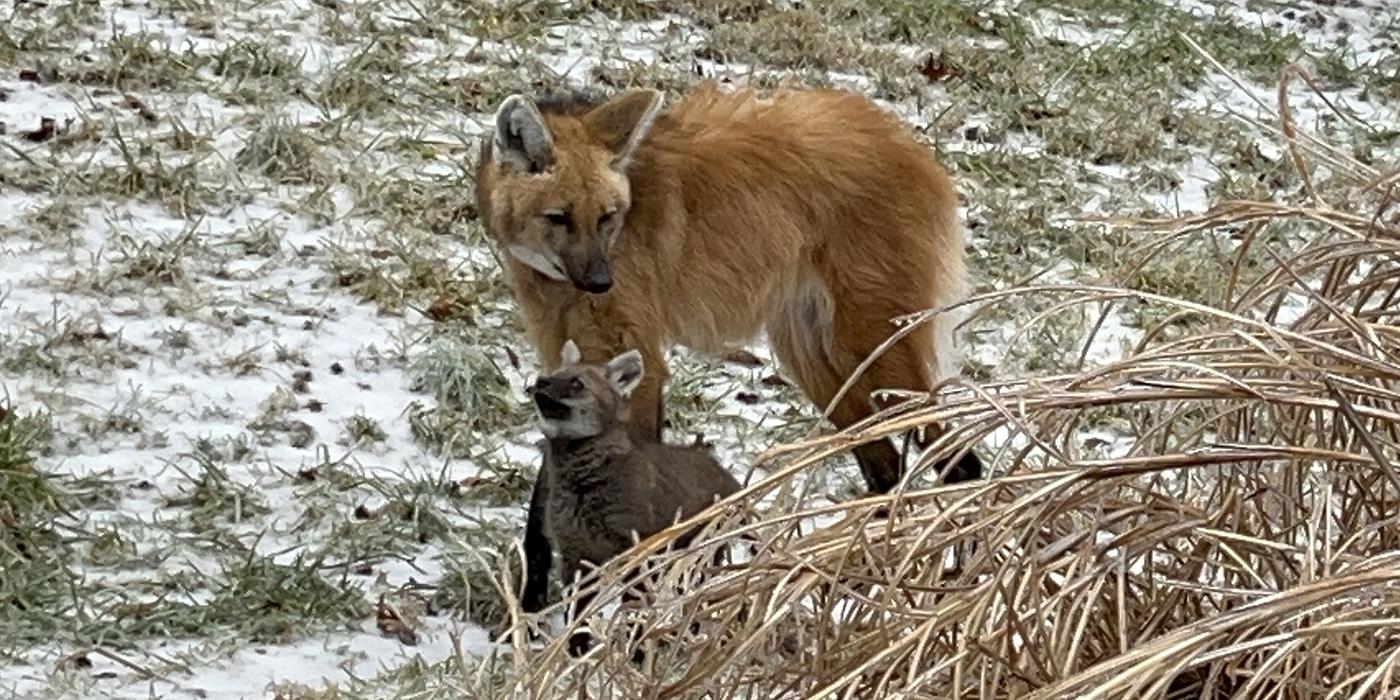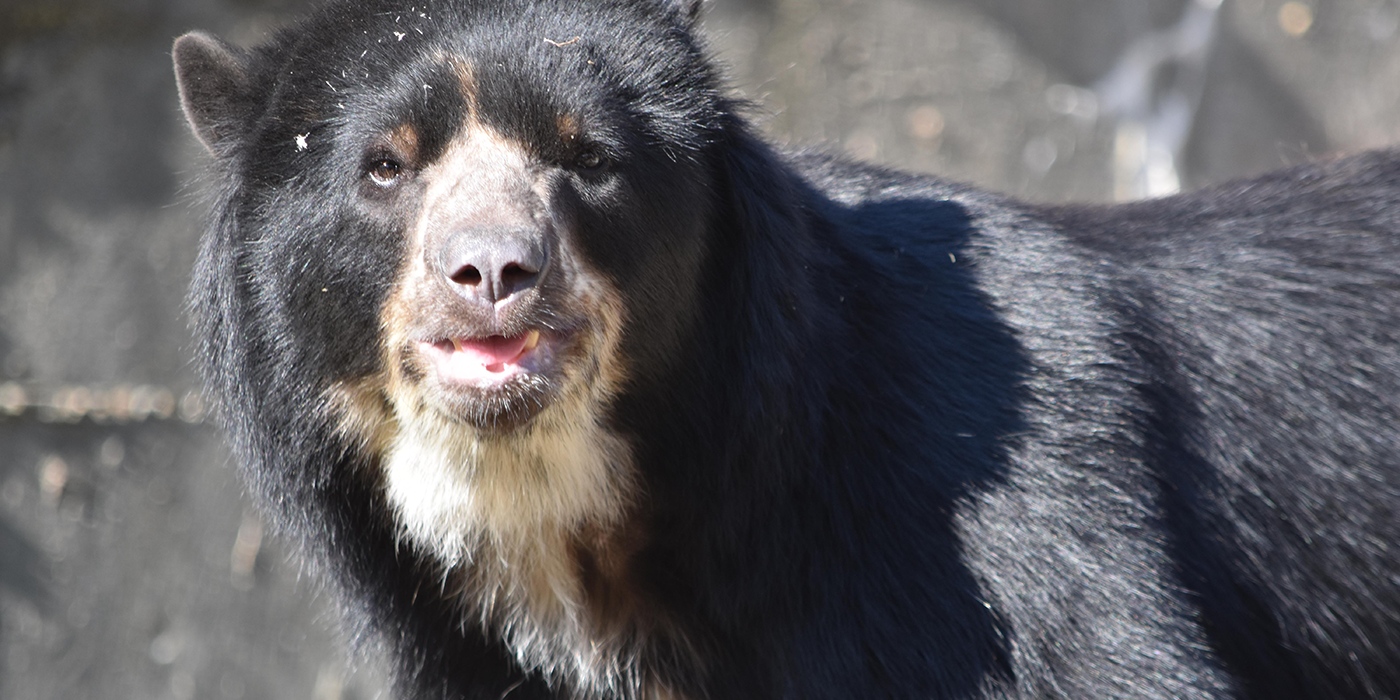Aspen and Juniper: A Beaver Love Story
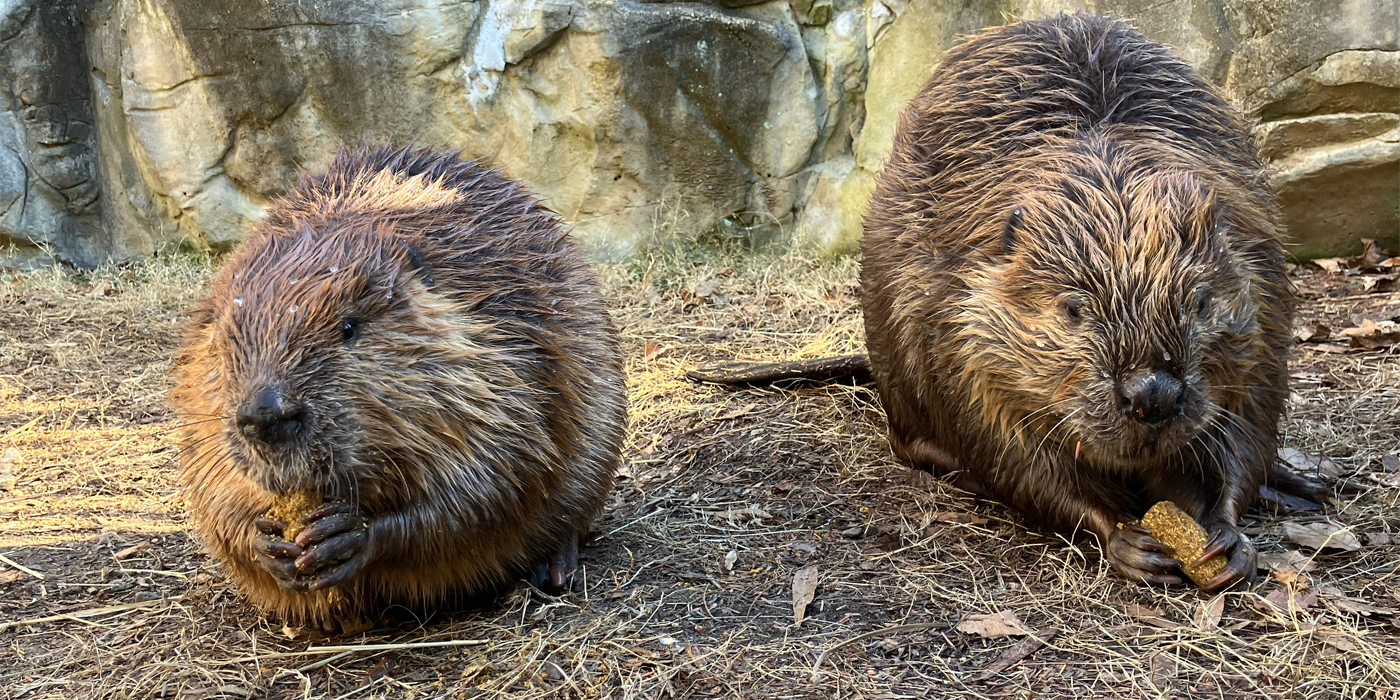
It’s a tale as old as time. Boy meets girl. Girl meets boy. Boy bites girl on tail. Girl runs away. Six months later, boy and girl are sharing a lodge together.
Also, they’re beavers.
Even though their first meeting wasn’t exactly a Hollywood “meet-cute”, 7-year-old male Aspen and 1-year-old female Juniper are now cohabitating happily at the Smithsonian’s National Zoo and Conservation Biology Institute. In this Q&A, American Trail keeper Jackie Spicer shares a story how an initial ‘failure to lodge’ eventually gave way to pondside passion.
Why did the Zoo decide to play matchmaker for these two?
We pair our beavers together for companionship. Beavers are very social and they’re monogamous—they often remain with the same mate for their whole lives.
Family units are how beavers organize themselves in the wild. Breeding couples work together to build lodges, which are huge, domed structures made of sticks and mud. Beaver lodges are safe places for a family to sleep, raise young and stay warm in the winter.
How did Aspen and Juniper arrive at the Zoo?
Aspen was born in human care—at the Detroit Zoo in Michigan—and came to us when he was around 9 months old. Aspen lived with other beaver at the Zoo before, including a female named Poppy, who passed away in 2022. She mostly tolerated Aspen rather than liked him. Even though they were biologically compatible, their personalities didn’t match.
Meanwhile, Juniper was born in the wild in southwestern Virginia. Rehabilitators from the Southwest Virginia Wildlife Center of Roanoke were called in after a group of campers reported she had seen a young kit wandering around alone. Unfortunately, they couldn’t find Juniper’s lodge or any other beavers nearby. At her young age, she would be unlikely to survive for long by herself.
The wildlife center deemed her non-releasable, but we knew we could give Juniper the opportunity to live a full life at the Zoo. And since we were hoping she might be a good companion for Aspen, we brought her in last spring. She’s been living at the American Trail ever since.
What are their personalities like?
Aspen is a little more aloof and prefers to eat in peace. Juniper, having imprinted on humans, focuses on keepers and will follow us around if we’re working in their exhibit. Both beavers love to carry logs and sticks into the lodge and they’re almost constantly working to create a cozy space for themselves inside their exhibit area. They are very busy beavers!
Why wasn’t it love at first sight for Aspen and Juniper?
Beavers tend not to accept outsiders who aren’t part of their family group. Aspen had shared space with other beavers before, so we figured he would probably be willing to live with a mate…but he ended up being pretty territorial at first.
For Juniper, Aspen was the first adult member of her species she’d had close contact with. She didn’t really know how to behave as a regular beaver would.

Animal care teams used a mesh barrier to help Aspen and Juniper slowly get used to each other.
Our goal was to expose them to one another as much as possible before introducing them physically. When Juniper first came to the exhibit, we separated the space in half with a mesh barrier. The barrier allowed the beavers to see each other, smell each other and be in the same space, but not actually come into contact with one another. We rotated each beaver through the two spaces so they’d get used to each other’s scents. Then, we began feeding introductions, where we’d feed each beaver at opposite ends of the yard and slowly moved the animals closer together during each feeding session. The whole time we watched closely for any signs of aggression or indications that one of the animals was unhappy.
What signs were you looking for?
Beavers rely heavily on scents to mark the boundaries of their territory. At the beginning of the introductions, as soon as Aspen entered the lodge that Juniper had just been in, he would scent-mark over everything. Then Juniper would have her turn sleeping in the lodge, and she’d scent mark all over his stuff. Over time, we started to see less of that behavior as they became more acclimated to each other’s presences.
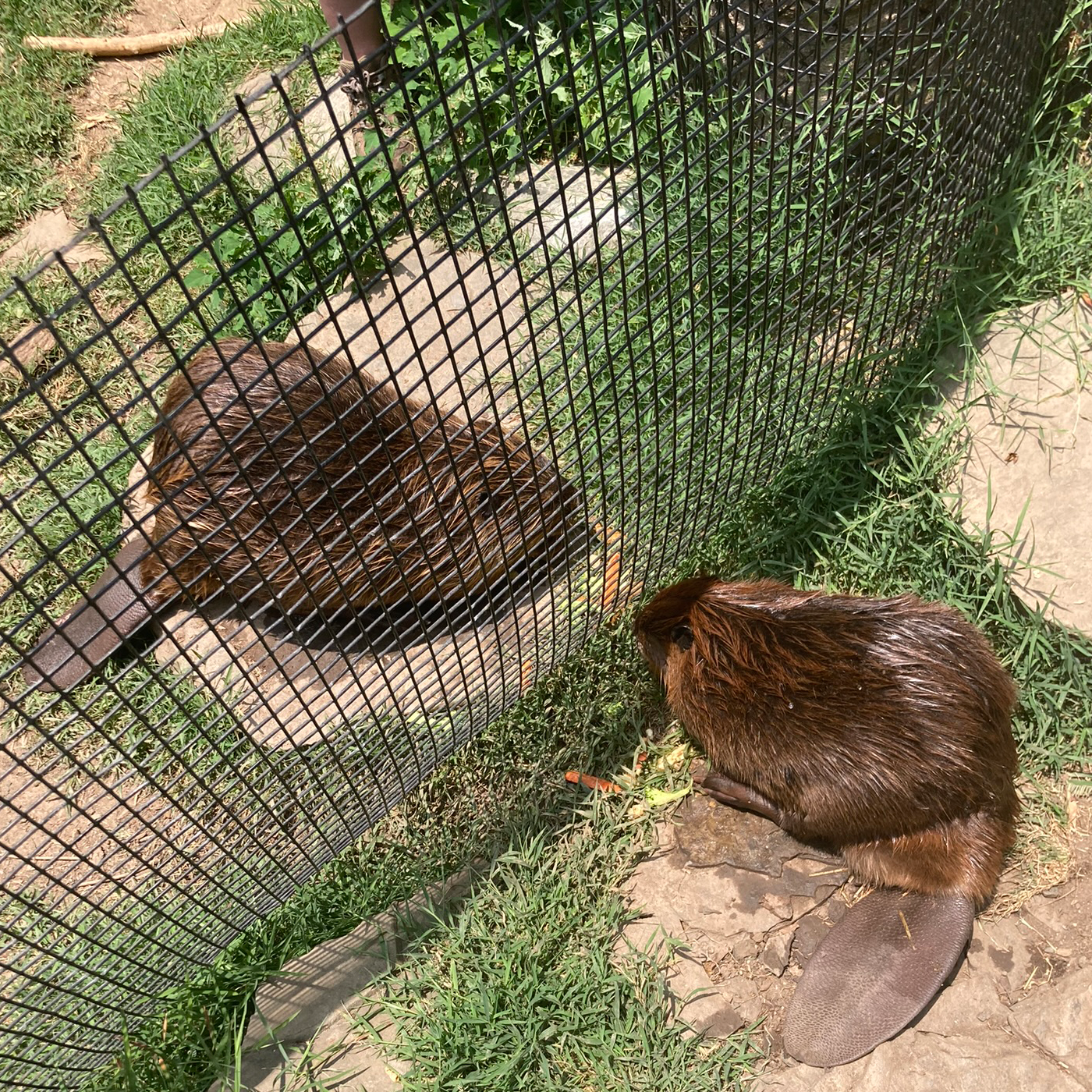
Aspen and Juniper greet each other through the mesh barrier.
Did they make any progress?
After four months of slow-paced introductions through a barrier, neither beaver was showing signs of aggression. It seemed like they might be ready for a physical introduction.
So finally, after countless hours of preparation, we lowered the barrier and the beavers got to see each other up close… and then Aspen bit Juniper in the tail.
Fortunately, we were able to separate them before anything serious happened. But we knew we’d need to put in a lot more effort if we wanted to make it work for these two.
Well, that’s romance for you. What then? Did you take any more steps over the next few months to help them get along?
We started the introduction process over again, but at an even slower pace.
We were hopeful biology would soon take over: breeding season for beavers typically begins in January, and we expected Aspen would be a little more open to sharing space with a new female friend at this time of year.
By January, we felt like we were able to give them full access again. The barrier was removed.
They gave each other space at first— Aspen wasn’t bothering Juniper, but it seemed like she wasn’t thrilled about being around him. He’d come into the yard to eat, then they’d come across each other and they’d kind of ignore each other. She slept in the yard, while Aspen slept in the lodge. They lived separately for about a week and a half.
Then one day, after our keeper team arrived at the Zoo one morning, we discovered Juniper and Aspen had spent the night in the lodge together! And they’ve been living together peacefully ever since.
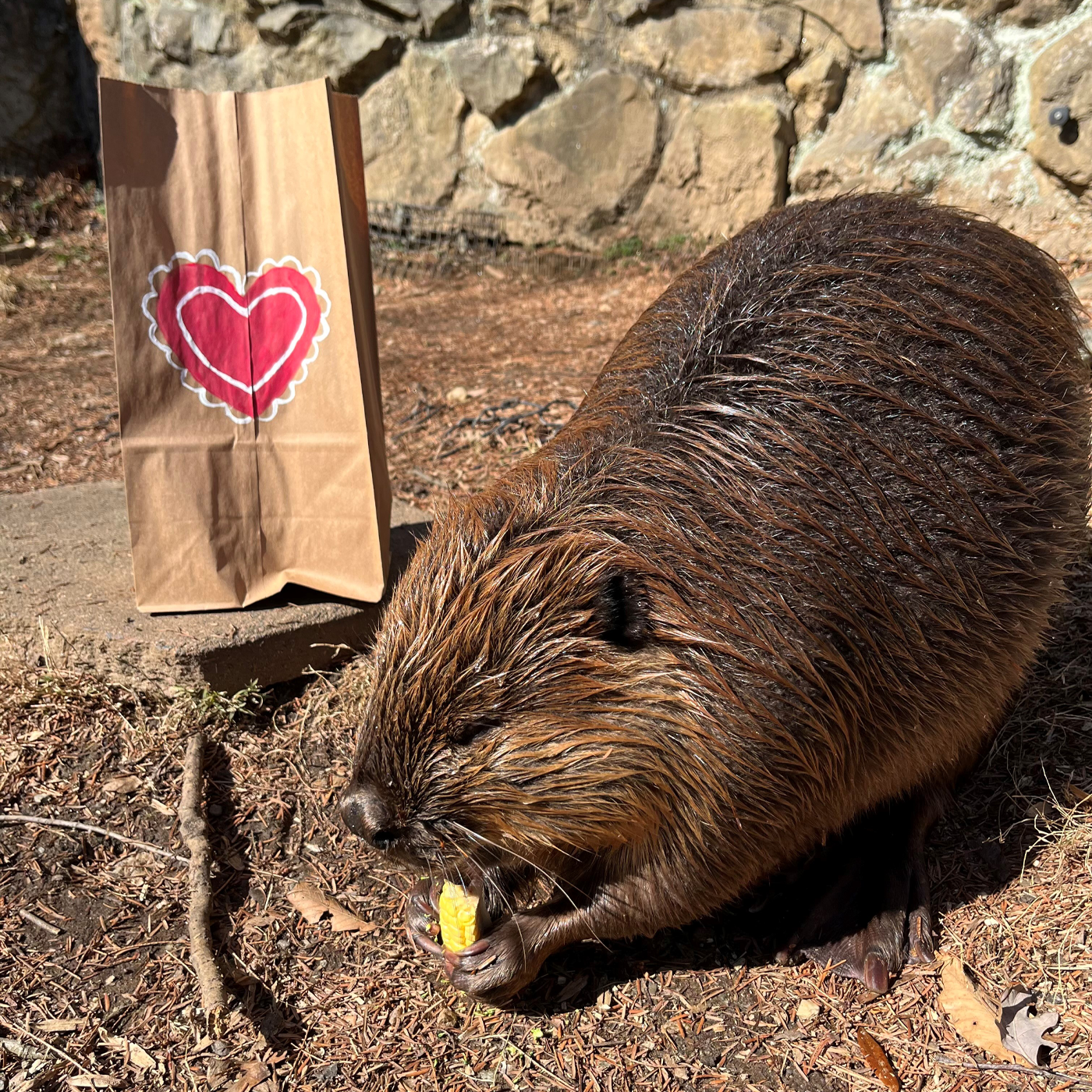
Aspen munches on a corn cob next to some Valentine's Day-themed enrichment.
How can you tell they like each other?
They’re a lot more comfortable around one another. They sleep in the same lodge. Aspen is definitely more relaxed—he’s gained about four pounds since they started cohabitating.
The biggest sign is that we’ll regularly see them sit and groom each other’s fur. We figure that if they didn’t like each other, they probably wouldn’t want to be touching each other as much as they do. (Fun fact: Beavers have an extra claw on their back feet that they use to keep their layers of fur in good condition.)
And when you see them touching each other and grooming each other’s fur, it’s just one of the cutest things you can watch.
Is the Zoo expecting kits anytime soon?
We’ll see! It seems like they’re behaviorally compatible, but Juniper is still young and not quite at breeding age yet. We’re not expecting anything to happen this spring. This time next year, when Juniper is fully grown, would be the first opportunity for them to breed.
It would be great to have a litter of beaver babies around. They’re absolutely adorable. They’re one of the best parts of having beavers at the Zoo.
Why is it important these two beavers are an established pair?
In the wild, animals of the same species don’t always get along with each other. Two beavers might not hit it off right away. But here at the Zoo, we have the ability to take it slower and help the animals realize they’re not a threat to one another.
Having a mating pair of beavers at the Zoo is good for their own well-being, and it’s also good for their species. Beavers were once hunted to the brink of extinction. Thanks to sustained conservation efforts, their populations are bouncing back across the United States. Giving the public the opportunity to learn about these funny and charming animals is part of what makes this job so rewarding.
Looking for a fun, free date idea for Valentine’s Day? Spend the day with Aspen, Juniper and hundreds of other adorable animals at the Smithsonian’s National Zoo and Conservation Biology Institute.
Related Species:


